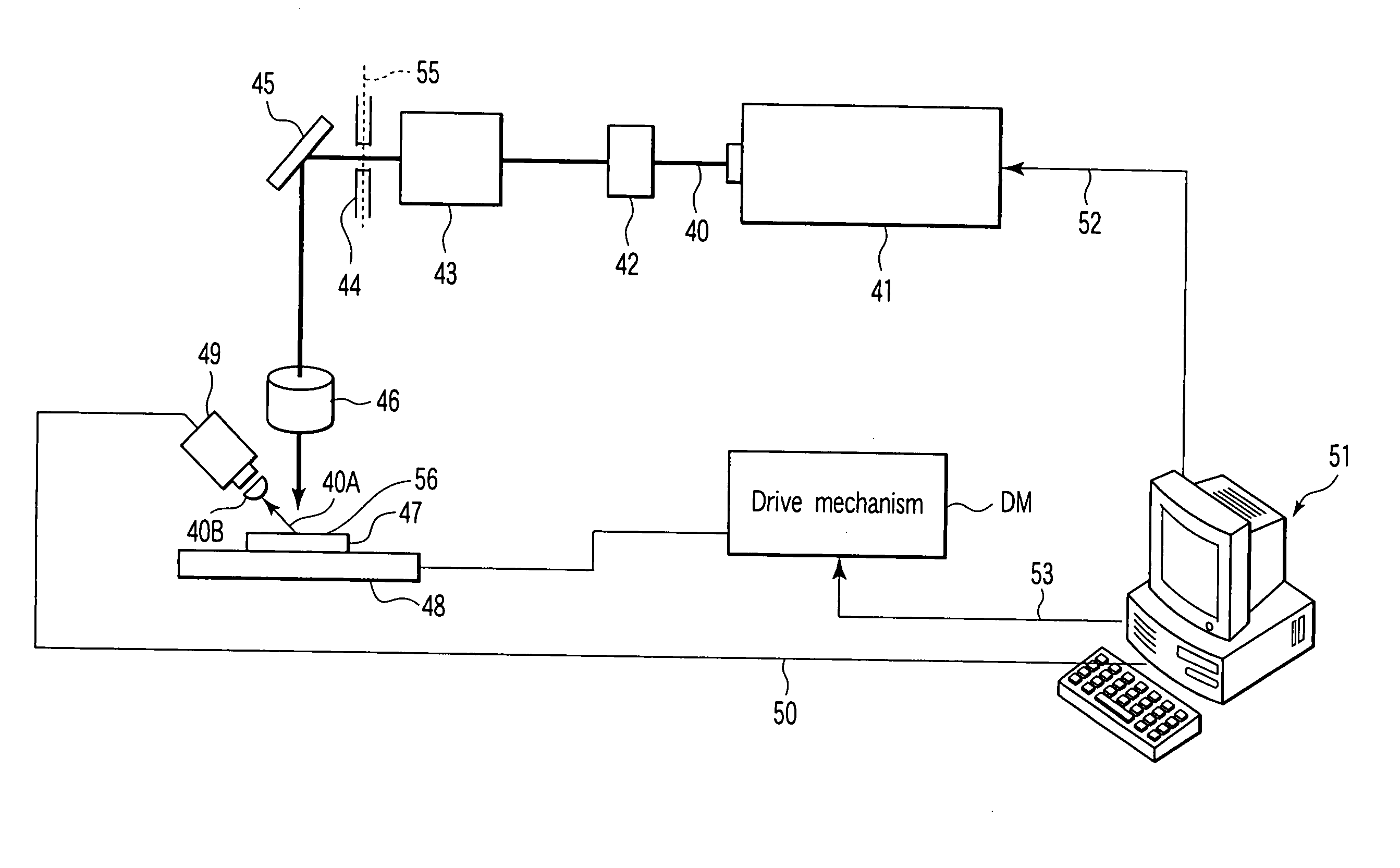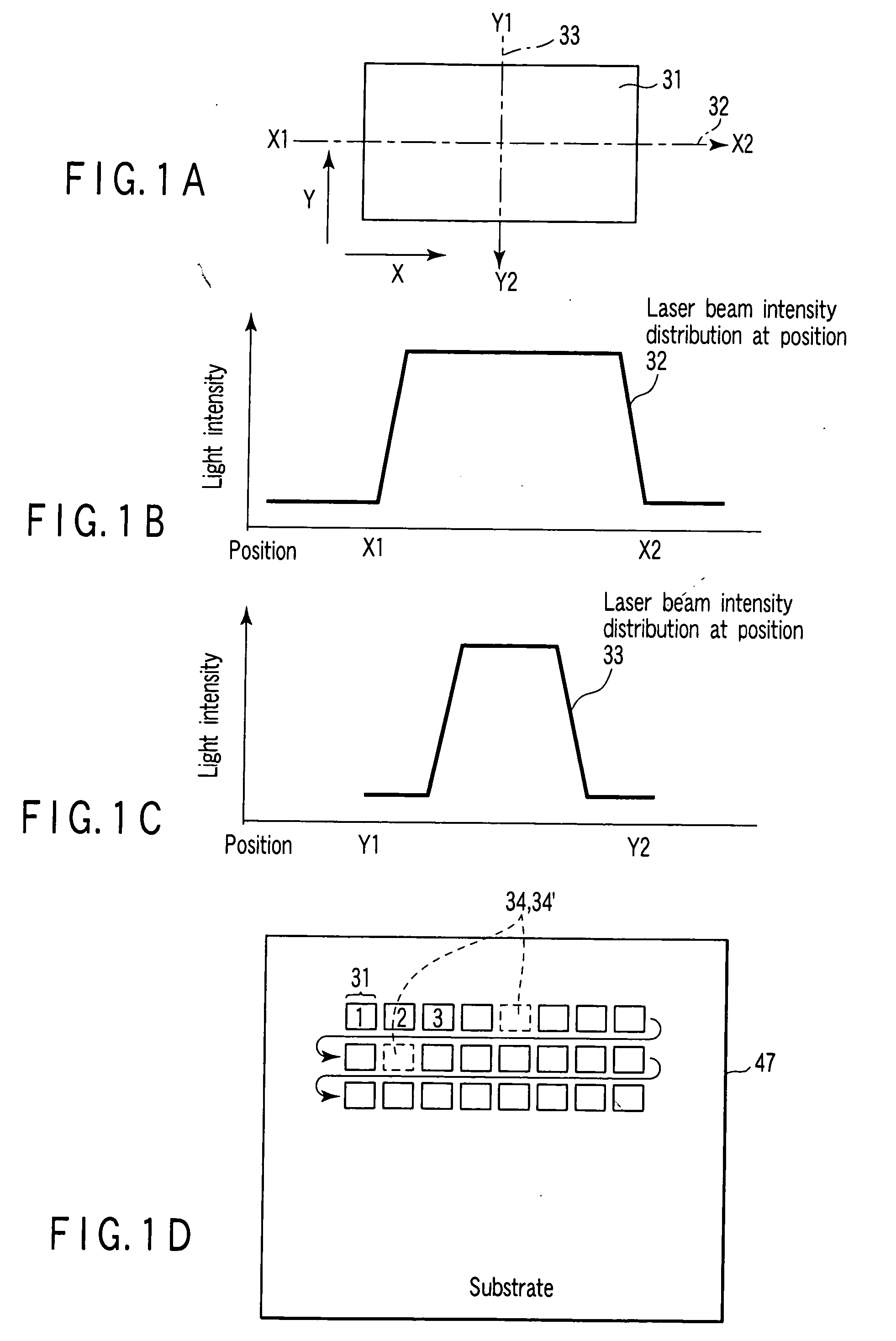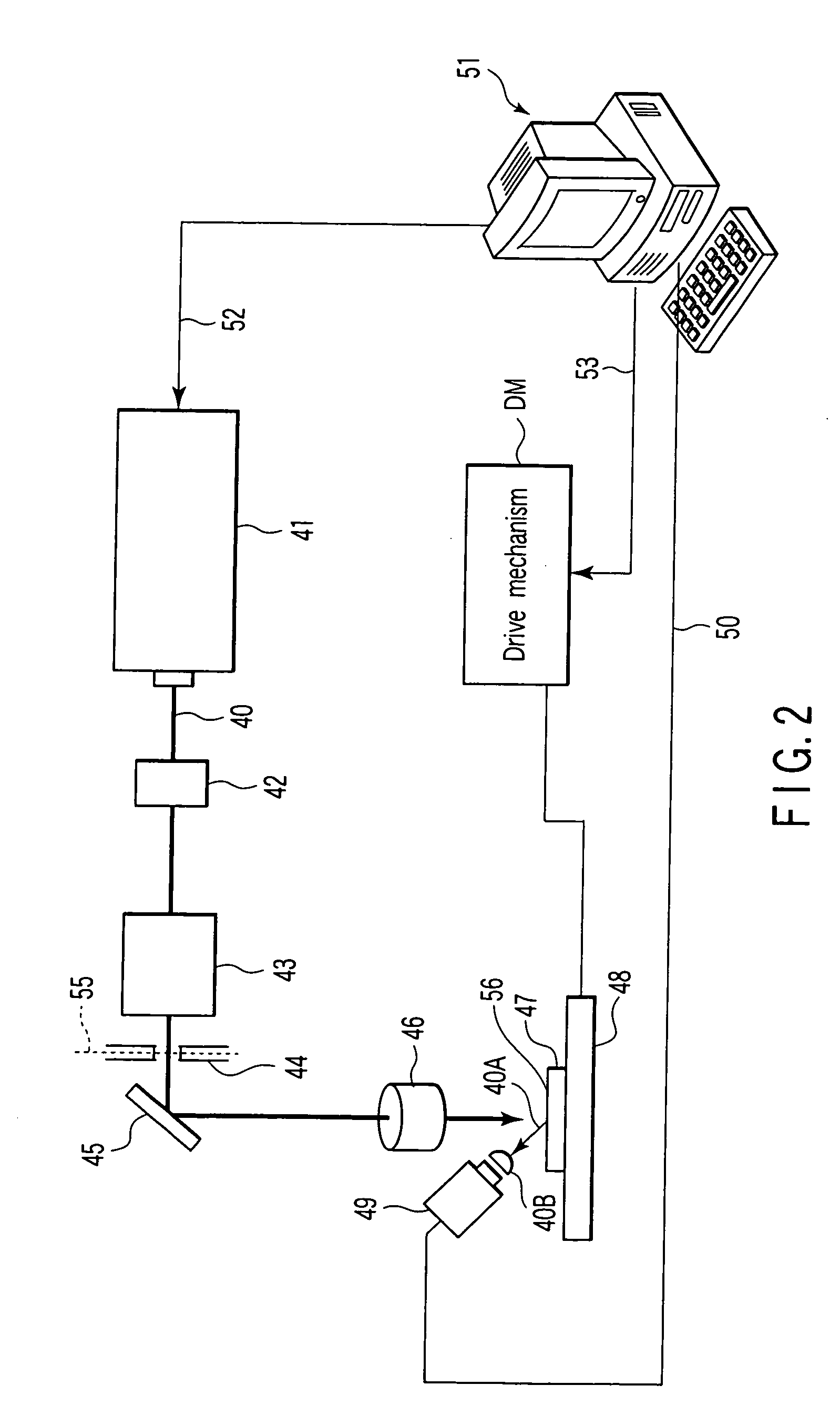Processing method, processing apparatus, crystallization method and crystallization apparatus using pulsed laser beam
a processing apparatus and laser beam technology, applied in metal working apparatus, manufacturing tools, instruments, etc., can solve the problems of reducing the fair quality ratio (the yield ratio) of the final product, machining defects, and insufficient crystallization or activation, etc., to achieve excellent laser crystallization performance, reduce the yield ratio, and process accurately without defects
- Summary
- Abstract
- Description
- Claims
- Application Information
AI Technical Summary
Benefits of technology
Problems solved by technology
Method used
Image
Examples
first embodiment
[0085] A laser processing apparatus using a pulsed laser beam and a laser processing method using a pulsed laser beam will now be described with reference to FIG. 2. FIG. 2 is a system block diagram showing a laser processing apparatus using a pulsed laser beam. In these examples, an excimer laser beam source 41 (e.g., XeCl, KrF, ArF or the like) having a large output is used as a pulsed laser beam source, but the present invention is not restricted thereto, and a solid laser such as a third harmonic wave or fourth harmonic wave of Q switched YAG laser may be used.
[0086] As shown in FIG. 2, an attenuator 42 which controls a light intensity of a pulsed laser beam 40 and a homogenizing optical system 43 which homogenizes an intensity of a laser beam on a two-dimensional plane are sequentially arranged in an exit optical path of the excimer laser beam source 41 which emits the pulsed laser beam 40.
[0087] It is to be noted that a position denoted by reference numeral 55 corresponds to...
second embodiment
[0130] A second embodiment is an example in which a processed state of a processing target body 47 is optically observed and a desired processed state and an unprocessed state are judged. FIG. 9 is a system block diagram illustrating an embodiment of an ablation apparatus which optically observes and evaluates a processed state (a result) of the processing target body 47. Like reference numerals denote parts equal to those in FIGS. 1 to 8, and their detailed explanation will be eliminated.
[0131] As shown in FIG. 9, the second embodiment is an example where a part of the processing target body 47 processed by a pulsed laser beam 40 from a laser beam source 41 is illuminated by additionally prepared optical observing means so that a processed result is observed. A probe light source 54 may be a lamp or a semiconductor laser which performs continuous oscillation. The processed position is irradiated with a laser beam emitted from this probe light source 54.
[0132] A photodetector 49 i...
third embodiment
[0135] As shown in FIG. 10, a third embodiment is an example in which a laser beam source 41 and a second laser beam source 404 are prepared and a processed position of a processing target body 47 is illuminated by additionally prepared optical observing means to observe each processing result each time. A pulsed laser beam 401 emitted from the laser beam source 41 is combined with a pulsed laser beam 402 emitted from the laser beam source 404 by a half mirror 403, and the laser beam emitted from each laser beam source becomes a pulsed laser beam 40 after transmitted through the half mirror 403. Usually, one of the laser beam source 41 and the laser beam source 404 is used to perform processing.
[0136] A photodetector 49 detects evaluation information of a processed state of the processed position, and quality of processing is grasped and determined based on a fact whether a signal value monitored by the photodetector 49 is a value obtained when normal processing has been carried ou...
PUM
 Login to View More
Login to View More Abstract
Description
Claims
Application Information
 Login to View More
Login to View More - R&D
- Intellectual Property
- Life Sciences
- Materials
- Tech Scout
- Unparalleled Data Quality
- Higher Quality Content
- 60% Fewer Hallucinations
Browse by: Latest US Patents, China's latest patents, Technical Efficacy Thesaurus, Application Domain, Technology Topic, Popular Technical Reports.
© 2025 PatSnap. All rights reserved.Legal|Privacy policy|Modern Slavery Act Transparency Statement|Sitemap|About US| Contact US: help@patsnap.com



